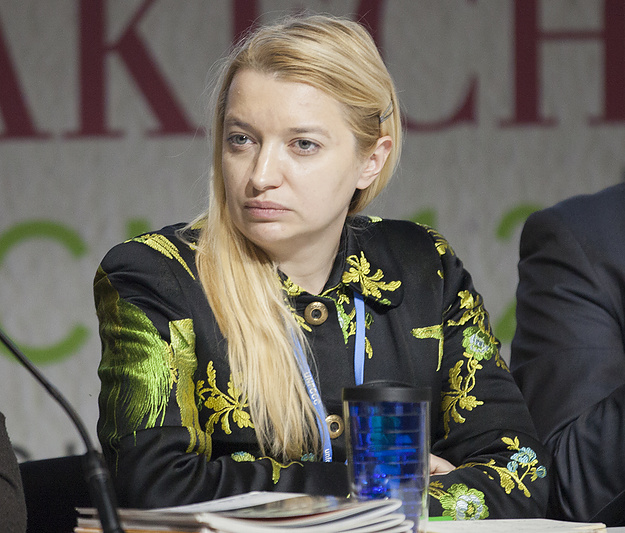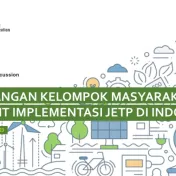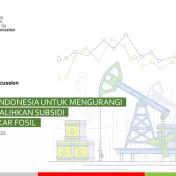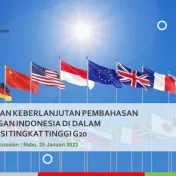Phase-out and reallocation of fossil fuel subsidies (FFS) is a low-hanging fruit for financing and implementing the UN Sustainable Development Goals (SDGs). FFS reform has been included in the SDG architecture as a means of implementation for SDG 12 on sustainable consumption and production, but its linkages with other Goals should be taken into account to catalyze action on multiple issue areas.
Phase-out and reallocation of fossil fuel subsidies (FFS) is a low-hanging fruit for financing and implementing SDGs. First, it has a diverse support base of both sustainable development advocates and “government downsizers.” Second, instead of requiring financing like many sustainable development policies, it could free up hundreds of billions of dollars for implementing multiple SDGs.
The SDGs call to “rationalize inefficient fossil-fuel subsidies that encourage wasteful consumption by removing market distortions” (target 12.c). This formula reproduces similar commitments within the G7, G20, Asia-Pacific Economic Cooperation (APEC) and Fossil-Fuel Subsidy Reform Communiqué. Both the G20 and APEC have an ongoing process of voluntary peer reviews of FFS. Moreover, 13 countries included FFS reform in their Intended Nationally Determined Contributions in the lead-up to the Paris Agreement on climate change in 2015.
The FFS commitment was reaffirmed even by Rick Perry, the new US energy secretary, while the US Government’s position blocked language on the implementation of the Paris Agreement supported by all other G7 countries at their meeting on 10 April 2017, in Rome, Italy.
Sustainable development proponents and “government downsizers” (also known as libertarians) condemn FFS for different reasons. From a sustainable development perspective, the concerns include that FFS benefit the rich more than the poor, and encourage the use of dirty fuels, creating pollution and undermining human health. Acting as a negative carbon tax, they distort the playing field for energy efficiency and renewables. Further, they create zombie energy, i.e. production from fields that would be economically unviable without government support. They lock in fossil fuel dependency and tie up scarce resources that countries could otherwise reallocate for sustainable development.
“Government downsizers” oppose subsidies as they do any other form of government intervention that leads to inefficient allocation of resources. From this standpoint, subsidies cause market distortions and undermine fair competition – the very reason countries file cases against each other in the World Trade Organisation. Of course, an important caveat is that libertarians oppose all subsidies, to fossil fuels, to renewables, and to other sectors. And politicians can be eclectic, for example mixing downsizing government with elements of protectionism, as we can observe happening now in the US. However, when it comes to countries other than their own, populist politicians tend to be very strong critics of subsidies abroad, for example, in China.
Governments’ interest in reforming FFS should not be surprising, given the scale of financial resources at stake. According to International Energy Agency (IEA), the value of FFS to consumers in 41 developing and emerging economies amounted to US$493 billion in 2014 and US$325 billion in 2015. Meanwhile, the Organisation for Economic Co-operation and Development (OECD) estimates that subsidies to both production and consumption of fossil fuels in its 35 member countries and six key emerging economies reaches US$160-200 billion annually. Combined, global producer and consumer FFS exceed OECD countries’ total development aid, estimated at US$130 billion in 2015, and global subsidies to renewables, valued at US$150 billion in 2015.
Since 2014, dozens of countries – from Saudi Arabia to Ukraine, India to Ghana – have reformed FFS, creating fiscal space for repayment of debt and funding development. For example, in 2014, Indonesia abandoned its gasoline subsidies, which accounted for roughly 10% of the government’s total expenditure. As a result, Indonesia saved IDR211 trillion (US$15.6 billion). These savings in 2015 were reallocated to major investments in social welfare and infrastructure through increased budgets for ministries (IDR148.2 trillion), state-owned enterprises (IDR63.1 trillion) and transfers for regions and villages (IDR34.7 trillion).
FFS reform has linkages to the majority of the 17 SDGs, with particular significance for climate action (SDG 13) due to its positive impacts on emissions reduction. The Global Subsidies Initiative (GSI) estimates emission reductions from the removal of consumer FFS at an average of 11% in 2020 in 20 countries. This average rises to 18% by 2020 with modest recycling of saved revenues toward renewables (10%) and energy efficiency (20%). According to GSI, removing global production of FFS would save an additional 37 Gt of emissions over 2017-2050.
FFS reform has been included in the SDG architecture as a means of implementation for SDG 12 on sustainable consumption and production, but its linkages with other Goals should be taken into account to catalyze action on multiple issue areas. Such linkages will be facilitated through accurate measurement of efforts to achieve this target, using the SDG indicator framework. The corresponding indicator by which the FFS target will be measured is “Amount of fossil-fuel subsidies per unit of GDP (production and consumption) and as a proportion of total national expenditure on fossil fuels” (12.c.1). However, this indicator is currently classified as ‘Tier III’ for the UN’s statistical purposes, which implies a lack of an agreed methodology for measuring it.
This indicator should be lifted up to Tier I or Tier II, so that FFS are reflected in the annual SDG progress report of the UN Secretary-General. There is already a very solid body of methodology and data developed by IEA, OECD, IMF, World Bank, GSI and other expert organisations that can support not only countries’ reporting on FFS, but also the actual implementation of FFS reform and, thus, implementation of this SDG target.
Consistent and accurate reporting on the FFS indicator within the SDG framework will create the transparency that is crucial for efficient allocation of resources and policy evaluation. This will be welcomed not just by sustainable development advocates, but also “government downsizers.”
This Commentary was first published on April 13th here: http://sdg.iisd.org/commentary/guest-articles/a-low-hanging-fruit-for-financing-and-implementing-sdgs-end-fossil-fuel-subsidies/
 Ivetta Gerasimchuk
Ivetta Gerasimchuk
Ivetta Gerasimchuk (PhD) is an economist based in Geneva. She leads the sustainable energy supplies activities of IISD's Energy Program and its Global Subsidies Initiative.
Key Reports:
-
“Financing Development with Fossil Fuel Subsidies: The reallocation of Indonesia’s gasoline and diesel subsidies,” available here
-
“Financing the SDGs through Fossil Fuel Subsidy Reform: Opportunities in Southeast Asia, India and China,” available here
-
“A Guidebook to Fossil Fuel Subsidy Reform,” available here
- With financial support by Stiftung Mercator. The Author and Germanwatch are responsible for the content. -



